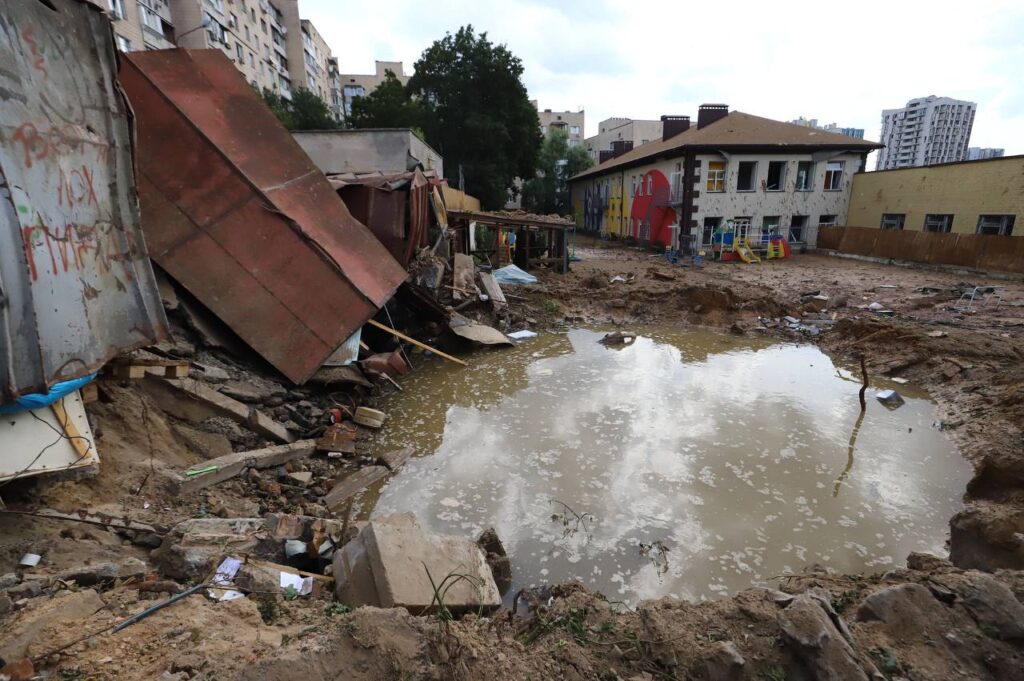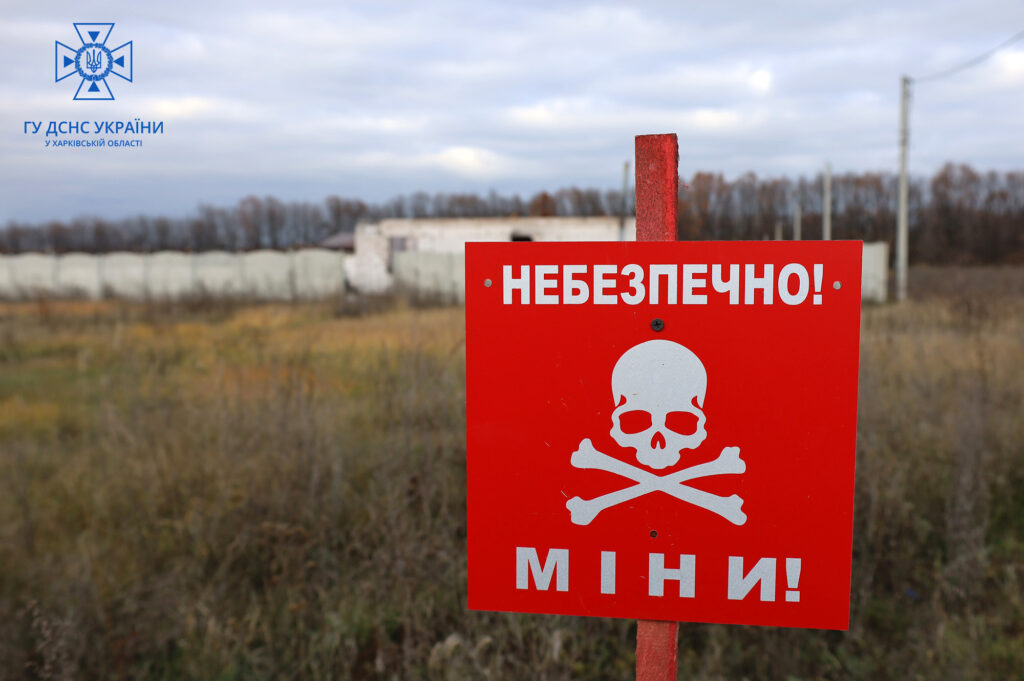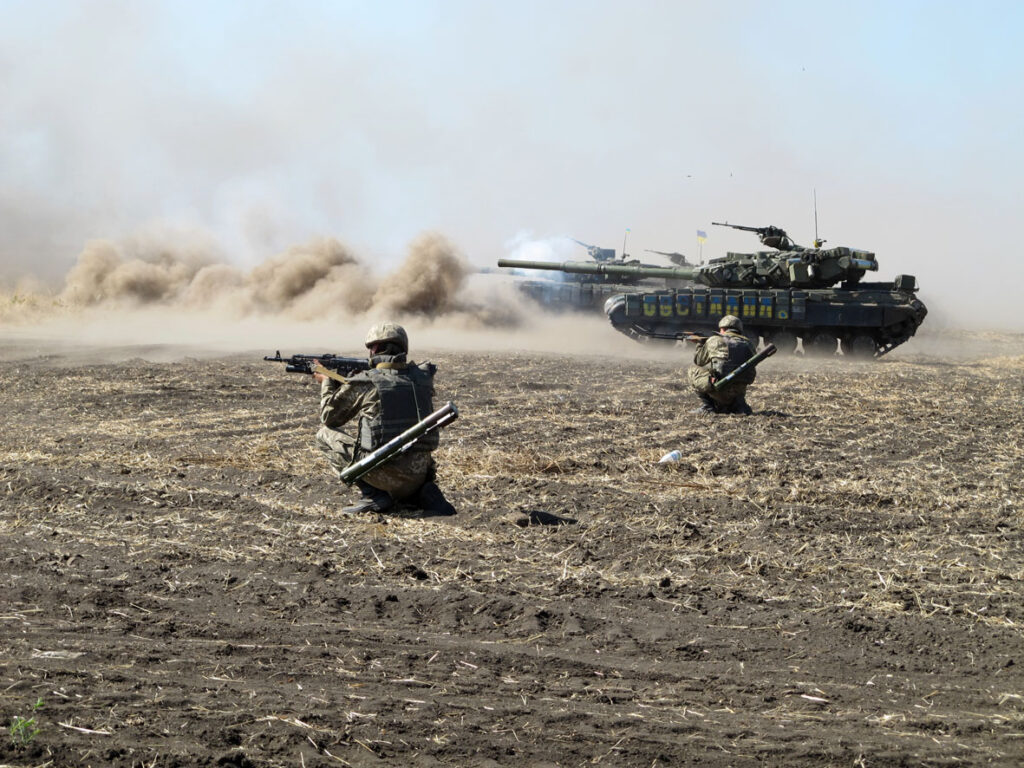By Dr. Jeff Brodeur
Once a peace agreement is reached between Russia and Ukraine, the latter will face a lengthy and costly process to remediate toxic industrial chemical contamination across vast swathes of land.
Three years after the full-scale Russian invasion of Ukraine, with hundreds of thousands of lives lost, immeasurable damage inflicted, and billions of dollars spent by both sides, 2025 started with the hope that a peace agreement is within reach.
However, the consequences of this war will not end when the fighting stops. Once hostilities cease, the recovery operation starts, and Ukraine faces a lengthy and costly reconstruction process before life can return to normal. The process will involve more than rebuilding cities and removing landmines and other explosive remnants of war.
The uncontrolled spread of toxic industrial chemicals (TICs) over the past three years, and in some cases dating back to the Soviet occupation of Ukraine, has created a serious, long-term threat to human health and life, as well as the ecology of the country. This must be strategically factored into any remediation and recovery process.
It’s important to note that TICs are not chemical weapons, but legitimate chemicals used in industry and agriculture that have not been managed properly. If chemical weapons have been used, as the Organisation for the Prohibition of Chemical Weapons contends, the remediation process will be more difficult. Ultimately, the difference between TICs and chemical weapons is the concentration. Weapons used against humans have higher concentrations of toxins than TICs.
Before the war, Ukraine had large industrial and agricultural sectors where the use of pesticides and dangerous chemicals was common. Despite their dangerous nature, these chemicals are safe when stored, transported, and handled correctly. As in any large-scale war, Ukrainian factories and chemical storage facilities were abandoned due to the hostilities without due care to store or dispose of potentially harmful chemicals safely. This often results in chemical leaks, contaminating ground and surface water, spreading across broad areas, and even into drinking water. Naturally, explosions from stray or targeted missiles worsened the pollution and the consequent problems.
Similarly, the destruction of towns and cities adds to the environmental toxins as sewage and waste handling are degraded or stopped altogether. With pumping stations, purification plants, and sewage facilities experiencing significant damage, pollutants such as pathogens, painkillers, antibacterial agendas, and plastics are entering water systems, with dangerous consequences for people and the environment.
Other Sources of TICs
Modern industrial and agricultural products are the primary source of TIC contamination that Ukraine and its allies must deal with. However, the country’s history adds older toxic challenges that are as dangerous.
During its occupation of Ukraine, the Soviet Union built power plants and industrial facilities that produced explosives. When it withdrew, it made no effort to ensure the safety of the plants or to regulate the disposal of the byproducts created, resulting in contaminants like fly ash (from coal-burning plants) and others harming the environment. The Chernobyl nuclear disaster is an extreme example of the consequences of this negligence.
Adding the Soviet effect to the TIC problem only exacerbates the situation as contaminants have, in some cases, had years to seep into the environment. The primary risk to the population will be tainted drinking water, worsened by the war. For example, studies have shown that drinking water in various regions contains excessive mercury, manganese, or iron concentrations, to name a few harmful substances.
The situation is yet more dire when considering the vast areas of arable land that have been subject to contaminants, either through direct waste and negligence, contaminated water sources, or use of chemical weapons.

The Difficulty of Remediating Contamination
TIC contamination leaves the country with three challenges, none of which have a quick or simple solution. Firstly, ignoring the risks and simply rebuilding and replanting crops on toxic land, the cheapest and most attractive option, won’t create problems immediately, but consequences will appear in the future.
Down the line, doctors may discover unexpected outbreaks of cancer in a town or specific region, with no apparent reason for these occurrences. Researchers conducting a comprehensive investigation will reveal that the residents have been exposed to certain TICs that were not properly cleaned up. Residents will likely encounter these contaminants through contaminated water or crops. Unfortunately, when this discovery occurs, it will be too late to take action, as many people will have already faced varying degrees of exposure.
Secondly, the remediation process is not an exact science, as nature itself is never 100% sterile. The challenge will be to deal with TICs to ensure the infected areas are “clean enough” for humans and crops, but not to take shortcuts and leave people at risk. Aiming for a perfectly cleansed environment is unrealistic, but ensuring contaminants in the air and soil are within levels the human body can manage is achievable.
The third and most significant challenge concerns time and money. TIC remediation is a time-consuming process that can be expensive, depending on the level of contamination, which is yet to be determined and is likely to be significant. If Ukraine is to get the job done efficiently, international assistance will be required to identify and remove the environmental toxins.
The bottom line of neglecting or ineffective TIC remediation is chronic illnesses and excessive fatalities that will occur over time. Other effects will be reduced fertility rates, high child mortality rates, and a range of debilitating diseases, all of which the country cannot afford, whether in human or financial terms. Crops planted on polluted ground will produce low-quality harvests that will be difficult, if not impossible, to sell on the international market.
This could lead to a situation in which farmers harvest crops only to find no legitimate market to sell them to. Their only choice may be to turn to a black market for contaminated agricultural goods, where poorer countries, desperate to feed their citizens, can purchase tainted food at low prices—regardless of the potential consequences. Alternatively, they could smuggle contaminated goods over the borders, where unscrupulous partners sell them as fresh, healthy produce, expanding the risks beyond Ukraine’s borders.
The biggest danger to Ukraine and its people lies in taking shortcuts in the name of reconstruction and efficiency. The country has utilized its resources and those of other nations to finance the war, while its economy has steeply declined. The most tempting route will therefore be to do whatever is necessary to get the economic wheels turning, even if it means overlooking the TIC danger or pressuring organizations to carry out “quick-and-dirty” remediation jobs, accepting the associated risks as something that will need to be dealt with by someone else at a later date.

A Lengthy, Painstaking Process
Remediating contamination is necessary to protect human life and Ukraine’s future economy. It is not a matter of simply spraying disinfectants and moving on. The wastewater and sewage treatment plants must be rebuilt or restored to working order, and agricultural land and all water sources must be decontaminated.
The only way to do this is by conducting intensive surveys before remediation begins. However, given the vast scope of land and water that must be decontaminated, surveys, remediation, and reconstruction will likely have to occur simultaneously. Multiple samples need to be taken in each designated area, and the contaminants identified.
While there are innumerable potential TICs to consider, given the causes of the contamination, the five primary chemicals to be aware of are:
- Mononitrochlorobenzen (MNCB) and Trinitrotoluene (TNT) from Soviet-era explosive plants.
- DDT and Hexachlorocyclohexane (HCH), resulting from pesticide dumping and ineffective or damaged storage.
- Sulfur dioxide and fly ash from improperly managed or damaged coal-fired power plants.
- Arsenic, chromium, or cadmium from metallurgical operations or nitric acid discharges.
- Nitric acid and ammonium nitrate from fertilizer production and agricultural operations.
Identifying contaminants quickly and reliably is critical, as workers at the site may need PPE depending on the toxins found. The required PPE may be as simple as gloves, or it could include over-garments and respiratory equipment.
Once the contaminated area has been defined and all the TICs identified, the optimal way to clean it is to remove the contaminated material from the site, which is why it is a long, costly process. Depending on the level of contamination, up to two meters of soil may need to be removed. This will take years, and in worst-case scenarios, even up to a decade before the “all-clear” can be given. Water contamination is a much more complex scenario.

The Importance of Post-Battlefield Presumptive Analysis
It is impossible to remediate contamination without knowing the substances contaminating the area under investigation. Having access to presumptive analysis capabilities will lead to the quick and accurate analysis of samples of almost any substance and deliver results in minutes. Ukraine’s remediation process will benefit from the application of presumptive analysis for three primary reasons.
Firstly, it quickly determines all the chemicals one is dealing with, providing teams with the information required to find and neutralize the contamination and understand how far it has spread. Secondly, once the scale and types of substances are identified, teams can be equipped with the appropriate PPE to protect workers. Finally, knowing the chemicals contaminating the material to be removed allows scientists to determine how to store and transport them. Some chemicals may react to the presence of another substance and automatically ignite, or they may combine to form a corrosive compound that will exacerbate the situation if not stored in the correct containers.
Separating solids is ordinarily straightforward, but liquids can become a complex problem if the exact composition is unknown or hazardous. An example of a simple, yet innovative remediation solution for dealing with water contaminated with radioactive isotopes is to mix it with concrete, which forms a solid that can more easily be transported and stored at a safe location.
After three years of war and the loss of many lives, a peace treaty in Ukraine finally seems within reach. However, when the guns fall silent, the next battle will begin as Ukraine commences rebuilding and reviving its economy by restoring its industrial and agricultural markets.
The reality of TIC contamination throughout the war-torn country will delay these efforts unless Ukraine, with the international community’s assistance, engages in a concerted effort to remediate its land and water supplies and build a clean, uninfected environment. Although lengthy and costly, ignoring the remediation process will lead to long-term harm to Ukraine’s people and economy, a cost the devastated country and its people cannot bear.
Dr. Jeffrey M. Brodeur has experience developing CBRN strategy, plans, and training programs at all echelons of the U.S. Department of Defense from a strategic, operational, and tactical perspective. He was formally trained at the U.S. Army Command and General Staff College and the U.S. Army War College, and his past performance includes senior battle staff at the Army Division (2-star), Army Service Component (3-star), and Geographic Combatant Command (4-star). Jeff’s last military duty assignment was the Assistant Commandant for the U.S. Army Chemical-Biological-Radiological-Nuclear schoolhouse and Regimental headquarters where he expertly managed the professional military education curriculum, training, and administrative management of an annual student load of approximately 8,000. Jeff has a Doctorate from Colorado Technical University and is an internationally recognized CBRN expert with conference keynote speaker and panel member experience in USA, Canada, Iraq, Brazil, and Sweden.





